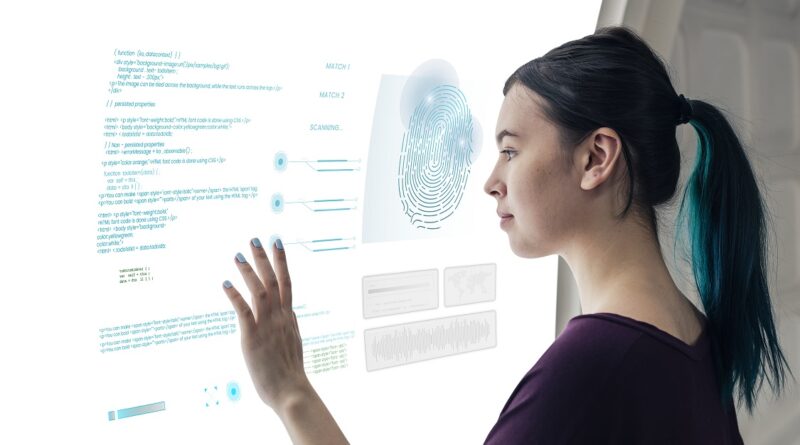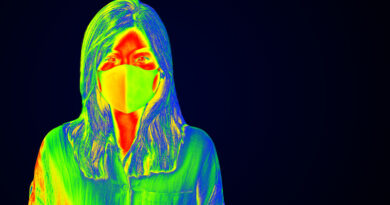Biometrics in Healthcare
Biometric technologies have become a valuable resource. Their use improves the quality of life and facilitates the work of many structures. Iris scanning, face recognition, and fingerprint reading is used in many areas of life, including medicine.
It is enough to touch the biometric instrument or look into it, and it will give out all the information about the patient, make his identification and recognize the unique biological information. This contributes to an increase in the speed of data acquisition and improves the healthcare system.
Like any relatively new technology, biometrics has a number of advantages and disadvantages that require consideration and development. Let’s consider all the nuances of its implementation in medicine.
Growth in the use of biometrics in healthcare
According to Technavio, the global market for the use of digital technologies in healthcare is forecast to grow by $204.37 billion during 2020-2024, i.e. an average of 20% per year.
But along with the convenience of using online identification, the use of mobile applications, chatbots, etc., there is a high risk of fraud. This contributes to increased demand for the introduction of biometrics, which will lead to improved data security quality.
For example, a patient enters one of the mobile applications for hospitals using voice biometrics using anti-spoofing and face scanning with passive recognition of a living person, which guarantees 4 levels of security for his personal data. And if a patient wants to get to a personal online meeting using biometrics, only he can do it. In addition, the technology will track the entire thread of the conversation, which will provide additional protection against fraud.
Benefits of using biometrics in healthcare
The main advantages of using biometrics in healthcare facilities:
- the accuracy of the information provided about the patient;
- focus and effectiveness of care;
- secure exchange of patient data between doctors;
- minimization of medical errors;
- safe prescribing practices.
All the benefits depend on the possibility and quality of the technology application in different hospitals.
Qualities influencing the use of biometrics
Before introducing biometric data into widespread use in medicine, it is required to assess the quality of providing the security of confidential data, ease of access to them, and to level the problem of discrimination. What is at the moment:
- Security is now regulated by HIPAA, and 42 CFR Part II is additionally used to protect it through regulation. At the same time, cybercrime is also on the rise, which is extremely difficult to track. The security system needs to be improved every day to minimize the incidence of patient data leaks.
- Some patients have faced manifestations of racism, religious discrimination, and other organizational problems due to socioeconomic inequality. For example, facial recognition technology is not as effective at identifying people of color, which makes it impossible to prevent medical errors in time. There is a need to keep these cases to a minimum.
- It is required to provide all patients with equal rights to access new technologies and equipment. Also, biometrics itself needs constant improvement, updating, and maintenance, which involves considerable costs. Today, this leads to the impossibility of introducing this method into small clinics and private offices. The lack of a stable Internet connection in villages and densely populated big cities also causes problems with data processing.
In contrast to health care, other areas have succeeded in organizing the use of the method correctly. It should be noted that biometrics models in medicine are very different, which, at the moment, makes it very difficult to improve them.
Help for little patients
In 2016, Elia Aronoff-Spencer became one of the developers of a portable biometric device, capable of taking fingerprints even from newborn babies. Due to the fact that a toddler’s fingers are very soft and tiny, using a regular identifier does not work. The new sensor is 7 times more sensitive and is able to read data without touching the child’s finger.
The technology will allow better identification of young patients of different ages, screening for family reunification, and diagnosis of allergies.
According to studies in Africa and Mexico, it was possible to prove the effectiveness of the device. Today it is planned to introduce it into commercial medical institutions.
How else can biometrics help in medicine?
In 2016, the University of Pittsburgh Medical Center introduced fingerprint scanners for the first time. This helped to reduce the number of fraudulent activities and shorten the time for patient registration.
The possibilities of using biometrics in healthcare are countless. Today there are more and more of them:
- with a one-time registration of a patient using biometrics in one medical institution, it will be easier and faster for him to register in another, for example, using a voice template;
- various forms can also be filled out online using technological authentication;
- managed to minimize the diversion of drugs, thanks to reliable protection.
In the future, we will have a more accurate relationship between the patient and his medical record. In emergency situations, when a person is unconscious and there are no loved ones with him, biometric face recognition will help to identify the person.
Conclusion
The adoption of biometrics is a slow but steady improvement in the healthcare system. How quickly this happens is influenced by the spread of technology to the public and healthcare facilities. Despite its value and demand, today there are difficulties with widespread use. It remains to wait until all imperfections are eliminated.












This industry has a potential to leave behind all other industries. The use of technology will make healthcare industry serve the population even more efficiently.
I think 20% growth every year is not too much to expect. Even Wikipedia’s page is filled with resources claiming growth, potential, and other data.
From clinic management and lower operational cost to a more efficient patient treatment and diagnosis, a healthcare application development services are all that we need to use for technology-powered solutions for boosting every single element of healthcare.